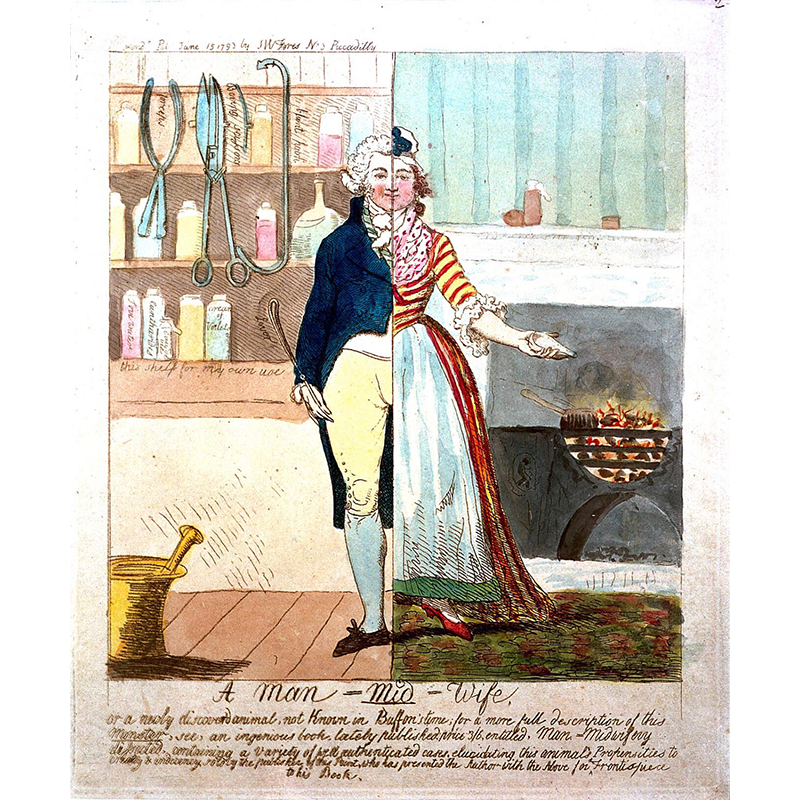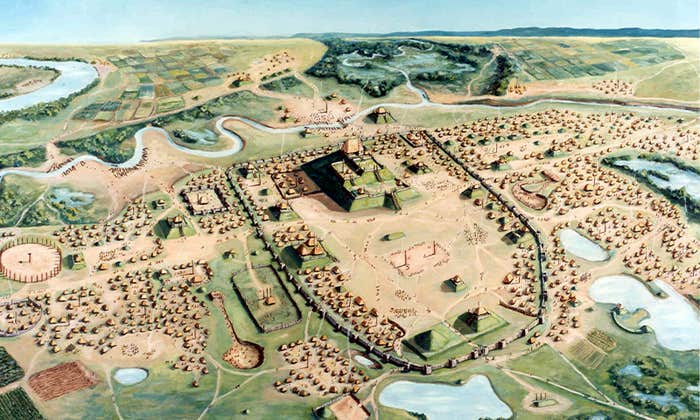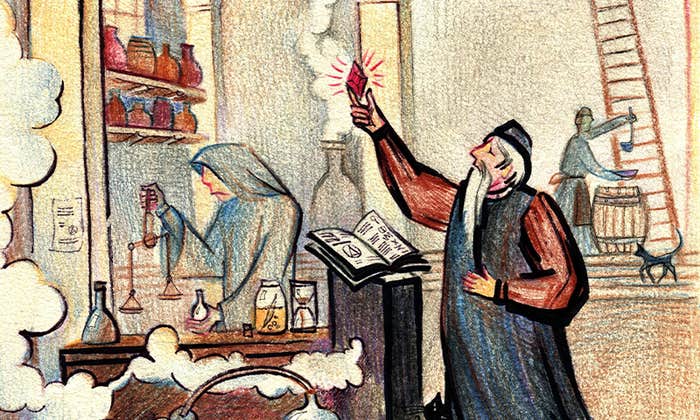In a post-Roe nation where abortion is no longer legally available to millions of women, where might they turn? That question leaped to mind when the Supreme Court’s draft decision in Dobbs v. Jackson Women’s Health Organization—now formalized, of course—leaked. Would some women find their answer not in pills or distant clinics, but in medicinal plants used for millennia to terminate abortions?
That curiosity sent me to the scholarly literature on ethnobotany and then to the research of Claudia Ford, a former midwife who is now a professor and chair of the Department of Environmental Studies at the State University of New York at Potsdam. Her 2015 Ph.D. dissertation in environmental studies, “Weed Women, All Night Vigils, and the Secret Life of Plants,” examines the use of plants for reproductive health by women in 18th and 19th century America.1
There was no moral restriction against abortion, even in the Catholic church.
Simply cataloging the plants and their applications was not the purpose of Ford’s research, though. She was most interested in the people who used them—the Indigenous, enslaved African, and European women thrown together by historical circumstance—and the social forces that shaped their knowledge and its use. Then as now, the very experience of human biology was largely a matter of culture.
Ford thinks these plants may soon see a resurgence. And for those interested in ethnogynecological plants, as they are technically known, Ford recommends John Riddle’s Eve’s Herbs: A History of Contraception and Abortion in the West.2 Meanwhile Ford talked to me about a chapter of American history in which people thought quite differently about pregnancy and reproduction than they do now; a chapter that, despite touching so many lives, is scarcely remembered today, and may hold insights for our turbulent moment.
“It’s not like this is something new,” says Ford. “And the autonomy, being able to make these choices, has always been with us. It’s only recently been made problematic.”

What is the connection between your research and the present moment?
When I was delivering babies, I used herbal medicine in my practice. So that’s one hat I wear, and the other is the ethnobotany hat, looking at the history of the use of plant medicines for health. Plants were our CVS and our pharmacy before anything else. It’s only been recently in history that we had chemically derived pharmaceutical medicines. For literally millennia, humans have used plant medicine for their health care.
Women’s health concerns were always a thing that communities wanted to address.* We’ve always had this body of knowledge about how to deal with these different concerns: painful periods, late periods, no periods, certainly childbirth and pregnancy, the labor, the delivery, the placenta, and anything having to do with the baby and especially the newborn.
I looked at North America in the 1700s and 1800s, when three vastly different communities came together in really problematic ways. I was trying to tease out, Was there evidence that these communities were sharing information? How much information were Africans bringing with them, despite the slave trade? How much was Indigenous knowledge? What were Europeans bringing?
How did the understanding of ethnogynecological plants differ between those groups? And not just in terms of the knowledge of the plants themselves, but the social and power dynamics shaping the way reproduction was understood in the first place?
That’s a great question. The Indigenous North Americans were living in the ecology that they knew. And had been here for millennia. So, their relationship to the North American plants is just deep and had evolved over long periods of time. And both Europeans and Africans came with their own knowledge, which was also deep, but they were coming to a different ecology. Different plants. Sometimes similar or the same species, and they would make use of that knowledge, but they had to learn from Indigenous Americans how to use the local plants.
Oddly enough, the subset of women’s health or ethnogynecology is pretty small. You’re not dealing with a huge number of issues; you’re trying to get the uterine muscles to contract or stop contracting. Physiologically and medically, it’s a pretty manageable area, and so they were doing a lot of the same things, or trying to do a lot of the same things. And they would kind of recognize each other’s expertise.
Male doctors started using a rye fungus to hurry labor—with disastrous results.
What was different among them?
One thing I found is that the Europeans and the Indigenous Americans had very different ideas about childbirth. That’s probably true of the enslaved as well, but I’ll set them aside for a second. European women who would bring their herbs with them were laboring under what’s called the Curse of Eve, which meant that they had been told from birth that to give birth was a curse from God. You would be in pain; they would say the last rites before they went into labor; they expected to potentially die.3 They had this heavy-duty religious structure over them about the pain and structure of childbirth: It was not just a fact, but it was a trial. It was to be expected. It was something that you almost had to go through.
Physiologically that doesn’t have to be true. It’s not a walk in the park, but it’s not a death situation, either. But European women were dying. After the “witch” trials in Europe, men started getting involved with childbirth, and they started using a substance called ergot, which is a fungus of rye that midwives had always used to stop bleeding. Male doctors started using it to hurry labor—with absolutely disastrous results.
So European women came into childbirth scared out of their heads. They were terrified, with good reason. For Native American women, Eve was not a concept; they had none of that. And so the Europeans would see Native Americans and write these ridiculous things like, “The squaw went into the woods, gave birth, and came back on the trail,” because they had no idea what they were looking at.
How did Indigenous women approach childbirth?
From what we can tell from Indigenous scholars, most likely Indigenous women went into childbirth thinking of it the way a warrior thinks of going into battle. It’s a rite of passage, it’s something that you need to do, but there’s no Curse of Eve. I found that really interesting. And oddly enough, European ship doctors would see how easy childbirth seemed for Indigenous women and they credited an herb called blue cohosh. In fact, blue cohosh is a fabulous uterine tonic. It’s still used. And many native communities were using blue cohosh toward the end of pregnancy and through labor to make the contractions more efficient.4 It worked really well. And when you’re reading the archives, it’s just hilarious, because the European men were like fanboys of blue cohosh. They were just like, “Oh my God, this stuff is amazing, we need to get that for our women.” They were right about the herb but they were looking at something they didn’t fully understand.
The other thing that I found is that during childbirth—and this is especially true on the plantations because it was an economic industry, including breeding slaves and keeping track of who’s being born—they tended to keep pretty good records about the births themselves. Who was there, how it went. And you would find that they were calling in whomever in the community was skilled at childbirth and had a good record. That could be another slave. It could be a local Indigenous woman. It could be a European woman. What I conjecture is that if you’re in the birthing room and watching the skilled midwife use plants to do certain things, everybody in that room is learning. And if you’ve got these three communities coming together in the birthing room itself, you have this exchange of information.
Terminating a pregnancy was seen as part of the menstrual cycle, not part of pregnancy.
Was there any record of European women seeing what childbirth was like for Indigenous women and saying, “Hey, wait a second …”
No. Unfortunately, the midwives got the hang of it but then the doctors came along and kind of blew it all up again. We’re still fighting that battle. Most women still labor under the Curse of Eve. It’s nothing to do with religion, but to this day there is this idea that childbirth is something painful, dangerous, and to be feared. And if that’s your experience, that’s your experience! But, yeah, we’re still fighting that battle. And may have lost it.
When did the rise of male-dominated obstetrics happen?
The witch trials started in the 1400s, depending on where you were in Europe. A lot of those people were herbalists and midwives. They had a lot of influence and a lot of knowledge. So that was a huge loss. What happened over the next centuries is that men started going into surgery in Europe, and started making different equipment, like forceps to aid childbirth. The idea of medicine and surgery and equipment started to be very male. They started getting really interested in taking control in the birthing room and badmouthing midwives. Now we’re getting into the 1800s. Then chloroform came along, and that was another big blow to midwifery. Then doctors could basically knock women out and be in control. Barbara Ehrenreich and Deirdre English wrote a really good book on the history of midwifery.5
Did you encounter any sense of women finding solidarity across racial lines and maybe even pushing back against male control of their lives?
In the historical literature, mostly what I found is this reliance on the expert, regardless of racial classifications. It didn’t erase the racial classifications, obviously, but at that moment in time was like this liminal space where you could have an enslaved woman in charge of that room regardless of who was giving birth. It could be the master’s wife giving birth, but the person in charge was the person who was the expert in making sure they had the safest possible outcomes. It could be a local Indigenous woman. I find that liminal space really interesting. It’s a very personal, intimate event, yet you have this crossing of boundaries.

How was the induction of abortion understood among these different groups?
There are a couple things that seem to be happening. First was that there was no moral restriction against abortion, even in the Catholic church. For many millennia the fetus was not considered an entity until quickening, which is when the mother can feel the fetus move. In the first baby, that’s usually around 16 weeks, and it can be a little earlier in subsequent babies because you know what to feel. But until such time as that movement started to happen, it was not a thing. Even if a woman realized she wasn’t having her menses, and she might know she was pregnant, still there was no association with a fetus.
So terminating a pregnancy was seen more as part of the menstrual cycle, not part of pregnancy. Pregnancy is something that led to labor and childbirth; terminating a pregnancy was part of your menstrual cycle.
At that time, somebody with a uterus is bleeding every month unless something else is going on. And that “unless something else is going on” was pretty big because we didn’t have as much knowledge. If you had a late period, the first thing people would think would not necessarily be pregnancy. They might know that, but they would be thinking “OK, how do I bring on this period?” Not, “How do I not have a baby?”
I know that is semantics. But Dobbs is all about semantics, right? And that’s a really important thing. I think somebody else has said that abortion is not an alternative to having a baby; let’s separate those things. Historically the termination of pregnancy was seen as part of the menstrual cycle. Some women were having periods that were too little; some, too much; some were too painful, too frequently, not frequently enough. There was always a desire: What can I do? Are there some plants that can help me to regulate these cycles so that I can feel healthy? And sometimes that absolutely included, “I’m late. I want my period to come. How can I bring it on?”
Was it understood that a period was being brought on by terminating a fetus?
It was probably not quite as clear as it is for us, because of course they didn’t have those little pictures. But there was knowledge that if the period didn’t come, it would lead to a pregnancy. But in those first three months, it wasn’t thought of as, “I’m pregnant, I’m going to stop this.” It was thought of as more, “I haven’t had my period. Do I want my period? Or do I want to see where this is going to go?” I know it sounds like it’s splitting hairs, but it’s a very different perspective.
Enslaved women were using cotton root to induce abortions to terminate pregnancies.
Were pregnancies ever terminated after quickening?
Women did of course say, “Uh-oh. Not now.” Or something happened: incest, age, inappropriate relationships like adultery or affairs. Those are human conditions. But for me, that distinction between restarting your cycle and terminating a pregnancy was really interesting. If you think of it as restarting your menstrual cycle, it really is a women’s health issue. Which is what activists are saying, right? Abortion is reproductive health care. It’s not about the morality of the fetus.
Were these understandings similar in the context of slavery? I would imagine that, where life is controlled and commodified and produced for the benefit of one group at the expense of another, there would be much more incentive for slave owners to regulate the reproduction of the people they owned.
The most fascinating archival work I did was when I uncovered this series of medical journal articles from the U.K., Scotland, Canada, and the U.S., and they were talking about the fact that enslaved women were using cotton root to induce abortions to terminate pregnancies. Because the root and the seed are abortifacients; they will cause your menses to come on.6
The doctors were talking about the fact that the plantation owners were upset because they were losing money. Because of course the enslaved women don’t want to be pregnant; they’re worked too hard and they’re going to be separated from their child. And if you were born to someone who was enslaved, you were enslaved. So they were like, No. And they were purposefully terminating pregnancies.
The plantation owners were losing money by not breeding them, so they found another herb which would reverse the effects. And they were forcing these enslaved women to drink this other herb, called black haw, to undo the effects of the cotton root. And they’re writing to each other across the Atlantic and Canada about how wonderful it is that if you do this, then the abortion won’t work. It was chilling to read.
Did you get a sense of whether, as there grew an economic and political interest in forcing women to give birth, there also grew an understanding among slave owners of the fetus as a person?
Probably not. This idea of a fetus as a person is only as recent as this incredible book that came out in the 1960s, When a Child Is Born, which was the first time that somebody made high-quality pictures of live fetuses in utero.7 They’re stunning photographs, just absolutely beautiful. When that book came out, it really changed things. Until we could actually visualize that, we understood pregnancy and periods and cycles, but not to the extent of naming a fetus as a person.
People who support women’s reproductive rights view them as a matter of personal autonomy. Was that awareness also prevalent at the time you studied?
I wonder. It’s hard to say. The other thing that’s interesting about the history is who writes it. It was mostly European men who were writing a lot of information down, so there’s huge biases about the recorded information, although their informants could be Indigenous or African women.8
One can imagine that there’s always been a need for bodily agency and personal choice, but very different relationships to the community. So the idea that you would give birth alone and be fully responsible for raising a child on your own was unthinkable. You gave birth within a community structure, whatever that community was. It could be functional, or not so functional—but you were within some kind of community structure. Now, of course, women and families are having to make these decisions in a very different context. Just the expense of taking care of a child.
Is there a pearl of wisdom that you would take from your research to help people better understand or better navigate what is happening now?
One thing I always say is: Don’t use herbs casually. The plants are powerful medicines. Especially knowing that women are sometimes desperate in this situation, I would never want them to hear me—or anybody else—say something about a plant being useful for abortion, and then go use it. Don’t do that. There are enough herbalists who are skilled who will help you, guide you, tell you how to do it. It’s like any medicine: It’s powerful. You need guidance.
The second thing I’d say is that the restarting of menstrual cycles and the termination of pregnancy has always been a part of the health of women’s bodies and always been a decision in families, where it belongs. It’s not like this is something new. We have always been doing this. It’s just something we need to be able to do. And the autonomy, being able to make these choices, has always been with us. It’s only recently been made problematic. ![]()
Brandon Keim (Twitter / Instagram / Substack) is a science and nature journalist. He is presently working on Meet the Neighbors, a book about what understanding animals as fellow persons means for human relations to wild animals and to nature.
Lead image: Found in the eastern and central woodlands of North America, blue cohosh (Caulophyllum thalictroides) was one of hundreds of plants used for reproductive health in pre-industrial America. It had a variety of uses, including inducing labor—something that European doctors learned from Indigenous people. Credit: Dan4Earth / Shutterstock
Footnotes
* “I’m mindful here that we talk about this as if it’s on a binary,” Ford says. “I don’t believe gender is on a binary. But talking about bodies that bleed, or if you have a uterus—however you want to frame that, in the historical context they’re definitely talking about women, and usually from a cisgendered context.”
References
1. Ford, C.J. Weed women. All night vigils, and the secret life of plants: Negotiated epistemologies of ethnogynecological plant knowledge in American history. Doctoral dissertation. Antioch University (2015).
2. Riddle, J.M. Eve’s Herbs: A History of Contraception and Abortion in the West Harvard University Press, Cambridge, MA (1999).
3. Corretti, C. The legacy of Eve’s curse: Religion, childbirth pain, and the rise of anesthesia in Europe. Journal of Anesthesia History 4, 182-190 (2018).
4. Ford, C.J. Sharing knowledge of blue cohosh. Journal of the American Herbalists Guild 18, 25-32 (2020).
5. Ehrenreich, B. & English, D. Witches, Midwives, & Nurses The Feminist Press at CUNY, New YOrk, NY (2010).
6. Ford, C.J. Pain pollen: The story of cotton. Ecofemme.wordpress.com (2019).
7. Roberts, S. Lennart Nilsson, photographer who unveiled the invisible, dies at 94. The New York Times (2017).
8. Ford, C.J. Researching ethnobotany in the archives: Authority and silences in the stories of Native and African American medicines. Herbalhistory.org (2021).


























